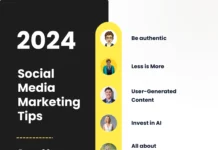A lot of us make this mistake – we pump resources and time into designing our website the way our customers want it but pay zero attention to designing the lead generation forms.
The lead gen form is at the heart of a landing page which could make or break your conversion funnel. In fact, this form is the last stop for a visitor on your website before he becomes a lead. Understanding the important elements that make up each facet of forms on your website will help you design a form that captures your audience’s’ attention and also understand what drives qualified leads. Expedia’s profit spiked by $12 million after they removed JUST ONE redundant field from the lead gen form – this is exactly why optimizing the lead generation forms are important.
Here are 10 effective changes you can implement today to turn your form into a lead gen machine.

10 Things You Can Do to Optimize Your Lead Generation Forms
1. Don’t Make your Lead Gen Form Look Like One
Wait, what? But seriously, when was the last time you felt excited after filling a form? In spite of common notion suggesting that you shouldn’t change the norm when it comes to things like forms, people just aren’t interested in normal forms. Try experimenting with non-standard UI elements and make the form more interactive. Use toggle sliders and clickable images to make the process of filling the form similar to using a fun tool. As long as you ensure that the necessary data is captured at the end of it, you can use interactive forms instead of traditional “fill-only” forms.
Learn it from – BrokerNotes
This lead gen form, placed at the homepage, increased the conversion to 46% from 11%.

Because this doesn’t look like a traditional form, users will be interested in seeing what it does. Moreover, look at how various elements are strategically used to make the whole experience interactive. Every UI element requires either a cognitive action where you have to think and type or a motor action where you have to click or move something. Motor actions are not as intensive as cognitive actions on the brain and therefore, reducing cognitive load will make it easier for the users to complete the form.
If interactive elements are used, the amount of thinking the user has to do to complete the form decreases significantly.
2. Include an Effective Call-To-Action
A call-to-action is basically featured as a button at the end of the form and as a copy at the top of the form convincing people to take an action. Because it tells a visitor what you’d want them to do, a CTA is very influential in leading a visitor to conversion. Here are some tips that will help you make your lead gen CTA more effective –
- Make sure your CTA button and text stand out. By placing the CTA above the fold, you will increase its visibility.
- Separate your CTA from other elements in the page.
- Let the intentions of the CTA button be very clear to the audience. Instead of just saying “Submit”, if your copy says “Submit Registration”, you will be making the purpose more clear to the visitors.
- If you are planning to include a CTA text on the top of the form, write your copy in a way that it encourages visitors to complete the form by taking the last step. Examples include, “Yes, I want this FREE e-book”, “Sign Up for this Exclusive Offer” and “Claim your Free Scan Report NOW!”.

Look at how this CTA encourages action by asking the users to build a high-converting landing page.
Learn it From – LinkedIn

Look at how LinkedIn’s sign-up form displays “Be great at what you do” prominently, it is also the essence of what LinkedIn is offering as a product. Also, notice the “Get Started – it’s free”? While the CTAs on the top influence the visitor to fill out the form, the “Join Now” CTA button at the end of the form ensures that the user completes the option. As mentioned, the CTA button stands out from the other elements and alerts the visitor where to click once they have filled the form.
3. Not Too Long, Not Too Short
The conventional advice to keep your form short if you want more conversions is only true sometimes. It is true that if your form is unnecessarily long, you will dissuade visitors from taking the time to complete it. But if your form is too short, the perceived value of the offer might come down. However, before deciding to include the number of fields that you want to include you must consider a few things. Recognize where the form comes in the buying cycle. If you are offering a free ebook or a checklist, you might only have to collect the name and email. But, if you are offering more substantial like a whitepaper or if the visitor is further into the research process (like filling up a “Call me back!” form), you might want to collect more detailed information.
Also, if adding more fields will help you to qualify each lead better (by age, demographics, interests etc.), you must definitely consider adding more fields.
Learn it From – Xero

When a visitor wants to sign up for a free trial, he’s already got a brief idea about the product. Leveraging this fact, Xero’s form has exactly the right number of fields – filling this form won’t look like a time-consuming affair to the visitor. As you can see, Xero’s form does not feature a title text about the form fields (except for the country field) but when you start typing, the field placeholder text becomes the title when you start typing. This ensures that all fields are clear to the customer for him to offer the right information.
4. Pay Attention to Space Around the Form
Use the space around the form to include trust elements that will build up the credibility of your service or product. For example, you could mention the benefits that a user will get after he signs up, just around the form. An explainer video that features your offering, customer testimonials, updates from your social media page, the listing of awards & appreciation your product as won, the feature of a blog post, the sample from your ebook is all good ideas.
In short, use the space around the form to encourage a user to take action. If your copy goes hand in hand with an offering, your customers will be motivated to sign up, Experiment with elements like images, video, and text to see which combination works well with your audience.
Learn it From – Base CRM

First all, the offering on the lead capture form is very different. Instead of just promising a demo, Base also offers an opportunity for the visitor to speak to a productivity expert. They have also used the space around the form to amp up the trust factor by including images of real people. Also, they have concisely described what an expert will help you achieve, motivating users to fill the form.
5. Make Use of Directional Cues
Show your visitors where to focus next on your website by using directional cues. People follow the trail subconsciously if you lead them with cues. These elements shift the attention of the visitors to the important points on your page, like the form’s CTA button in a particular field. Directional cues like arrows help reinforce the statement of benefit and bring the visitor’s attention to the offering. But, a directional cue need not be something as explicit as an arrow, you can use subtle cues like images of people with the eyes looking at important elements like the form headline or a testimonial. A directional cue is specifically beneficial if you have too many elements on the page and there is a dissonant color scheme.
Learn it From – The Art Institutes

There are too many elements on the page. A myriad of colorful images and a lot of information to be read on the left, but any visitor will immediately notice the form and its fields, thanks to the super bold directional cue. Also, look at how the CTA button stands out. The arrow leads the visitor to complete the form and also to click on the CTA button at the end of it.
6. Pay Attention to the Placement
Where you decide to place the lead gen form can make a difference as it affects the number of people noticing the form. Should you place the form above the fold or below the fold? “Above the fold” means the form is viewable without any further action.
A study by Jakob Nielsen found that only 19.7% of the users’ scroll below the fold while many users spend 80.3% of their time scrolling above the fold.
Conventional thinking goes that lead gen forms placed above the fold get noticed better than a “below the fold” form. The number of people who drop off increases as and when they scroll down the page. Here’s a study – Tom’s Planner was able to improve their conversion by 43.85% by just placing a sign-up form above the fold. Placing the form above the fold increased the likelihood of visitors completing it.
But, does that mean all lead gen forms have to be placed above the fold?
Not necessarily! If you want to guide the visitors through a series of steps to pique their interest, it makes sense to place the lead gen form as the last step on your landing page. Again, it is only through experimentation that you will find what works for your audience.
When FloridaTix shifted their form to below the fold, in the page that sells tickets to Universal Studios, the form submissions increased by 20%. In their case, because visitors were able to read the offer completely first, they were more motivated to submit the form.

Learn it From – Leadformly

A good example of how an ‘above the fold’ captures the audience’s attention is this form on Leadformly’s homepage. Look at how the lead gen form doesn’t look like a form in the first place but captures all necessary information. Did you also notice the directional cue?
Also – eToro
Look at how the “Join Now” form is tactically placed below the fold. While the rest of the page features product benefits and customer testimonials to educate the visitor about the offering, the lead gen form is rightly placed below informative content.

7. Validate the Data and Pre-Fill Fields
Sometimes, bringing down the number of fields will result in poor lead quality. Instead of focusing on reducing the number of fields, you can validate each field and make the purpose of the lead form clear. This way, not only will improve the quality of leads but also help visitors fill the right values.
For IronMountain, a B2B software company, validating data in each field helped improve the number of qualified leads by 140%.
Another alternative to improve the efficiency of your lead gen form is by pre-filling form fields. If you have used HubSpot, you must have noticed that their lead generation forms automatically recognizes you and fills the information that you might have previously entered. Sometimes, because of this pre-filled form fields, all you need to do is just click on the CTA button!
Learn it From – HubSpot

This lead-gen form in HubSpot’s library used pre-filled fields to collect information. If you have logged in with your account or if you have already provided this information to HubSpot while downloading free resources before, the forms will be pre-filled. This reduces friction and the user has to spend considerably less time filling the form.
8. Avoid Captcha’s Unless Necessary
Let’s face it – captchas have become a real pain for users and are a conversion killer. So much so that companies are losing up to 3.2% on conversions just by turning on a captcha. And this is not a small amount at all when it comes to conversions! What more, Animoto stopped using captcha on their form and improved their conversion rate by 33.3%.
On an average, visual captcha’s take 9.8 seconds for a user to complete, so audio/video captcha’s doesn’t seem to be a viable alternative for now. While it is true that captcha’s help brings down the spam, it also eats up the time of a visitor. Unless really necessary, it might be a good idea to be done with that captcha. But if you still think that you must use captcha, you can replace it with timestamp analysis and honeypot fields.
If you are still thinking about the amount of spam if you removed captcha’s, consider these questions –
- Is the amount of spam that you are getting worth losing potential conversions?
- If you want to use captcha’s, is your captcha really user-friendly?
- Have you tried testing for conversions without a captcha? What do your visitors feel about the captcha on your form?
Learn it From – Animoto

This example above is not to illustrate how to use captcha’s on your form. Animoto followed a process and experimented to test if removing captcha’s work for them. Removing captcha’s helped Animoto increase their conversions by 33.3%. Before you decide to remove the captcha, you must first test to see if you can manage the spam with other alternatives. Also, try moving other fields and try validating field data before deciding whether or not to keep captcha.
9. Use Conditional Logic
Ask better questions using conditional logic. For example, if you were a directory site offering information about doctors and hospitals, you might want to display/collect information based on the specialists that the visitor is looking to consult. While this might sound like a simple thing, a lot of forms have the same cookie-cutter fields. Using conditional logic will let you ask relevant questions to different customer segments while also helping you segment your audience easily. To the visitors, a form designed with a conditional logic will look interactive. Also, because the questions are relevant, customers will be motivated to answer them.
Learn it From – BankBazaar

BankBazaar cleverly uses conditional logic to guide the user to the next relevant step while also capturing the necessary information. If the visitor chooses “Transfer my existing home loan”, he wouldn’t probably want to view the list of banks offering home loans. If one were to ask all these questions in a form, not only would the form be long but the users will also be made to answer irrelevant questions.
10. Optimize for Mobile
We can’t stress this enough! Over 52.7% of global mobile phone population has accessed websites from their mobile devices and smartphones and it has become important than ever to optimize your lead generation form for mobile. Designing a lead gen form that renders well on mobile devices can make or break your conversion rates. Also, visitors are 51% more likely to do business with retailers whose site is optimized for mobile. Here are some tips to help you optimize your lead-gen form for the best mobile experience.
- Use mobile friendly CTA buttons
- Keep the design simple to reduce friction. Eliminate fields that aren’t necessary.
- Make sure the page and the form loads quickly
- Cut down the number of clicks required to complete your lead gen form
- Help users easily fill fields like email addresses, phone numbers and zip codes by bringing in a specialized keyboard instead of the default mobile keyboard.
- Optimize the form to make it more readable by using the right field size and labels.
Learn it From – Datanyze

Look at how Datanyze’s form displays on a mobile device. The field labels are clear, their sizes perfectly fit the screen, the page loads fast and there’s no cluttering on screen. Also, look at how the CTA button is perfectly optimized for mobile.
Conclusion
These ten tips would have given you an idea of how to optimize various form elements to maximize conversion. But, do not forget that your audience and business is different from the examples described here. Keep testing and experimenting to find out what works with your audience.
Also, have you used any other optimization strategy that has helped you optimize your lead generation forms? If yes, let others know about it by leaving a quick comment!
See also: 6 Ways To Use Pinterest For Lead Generation












